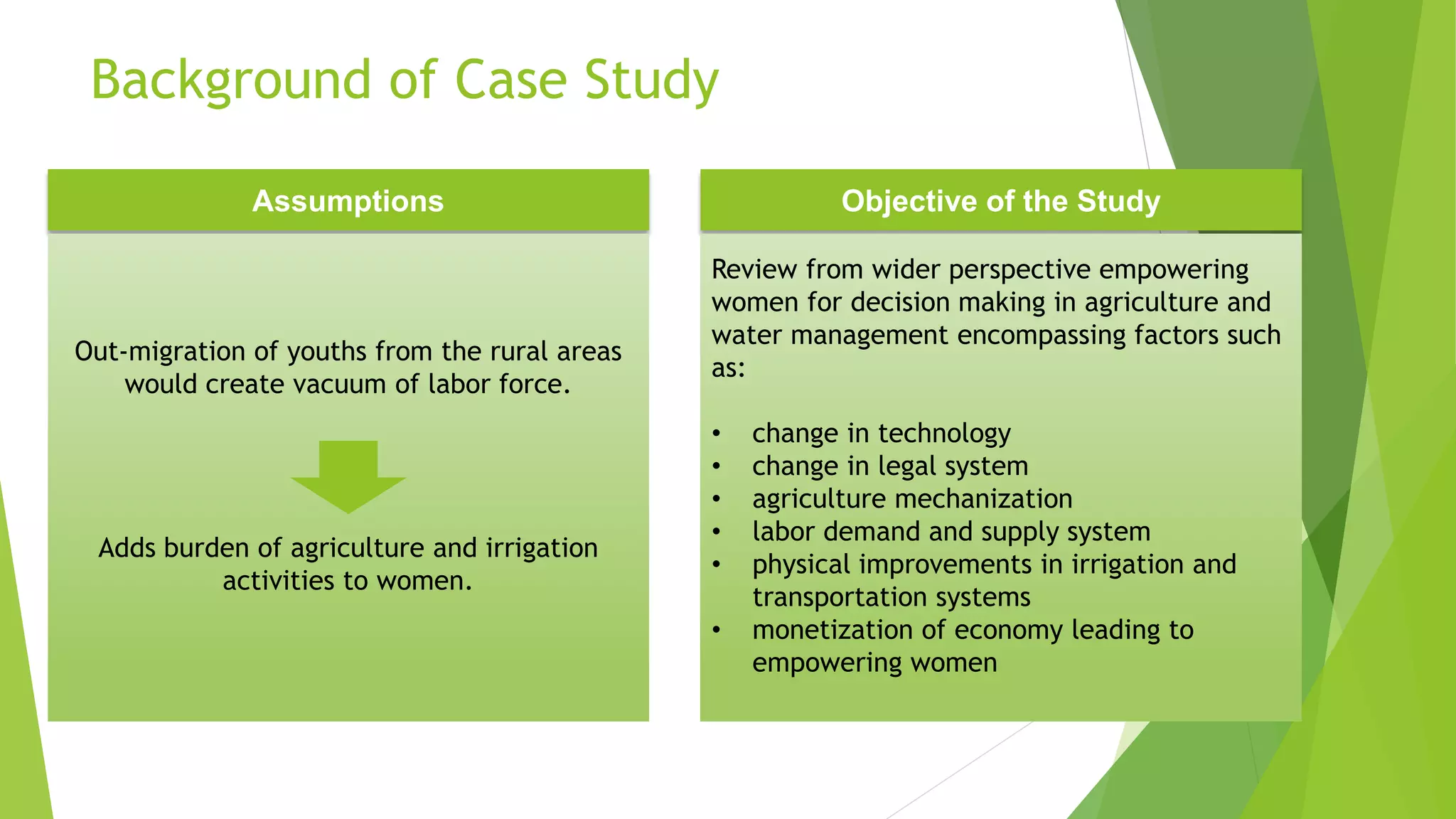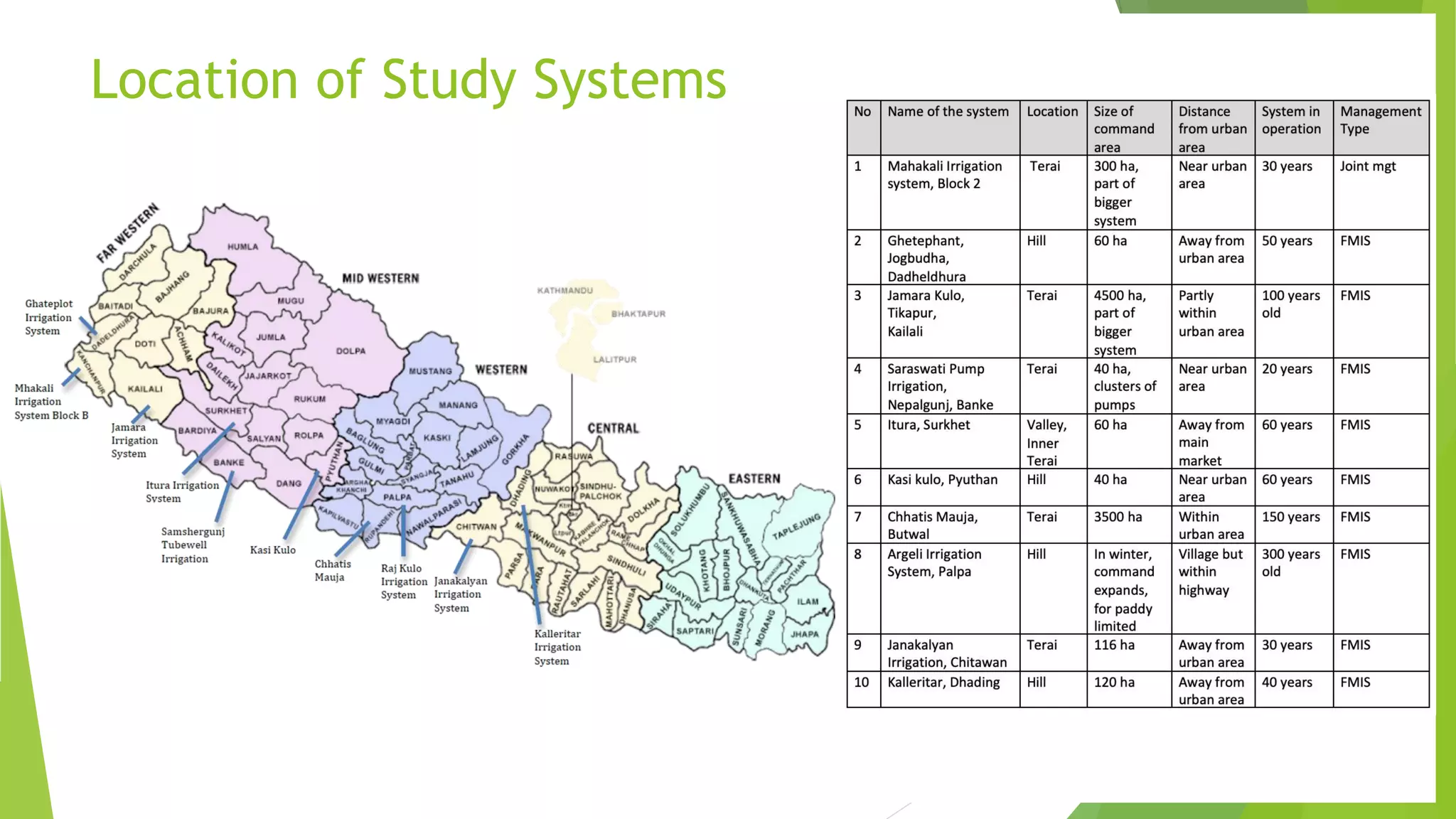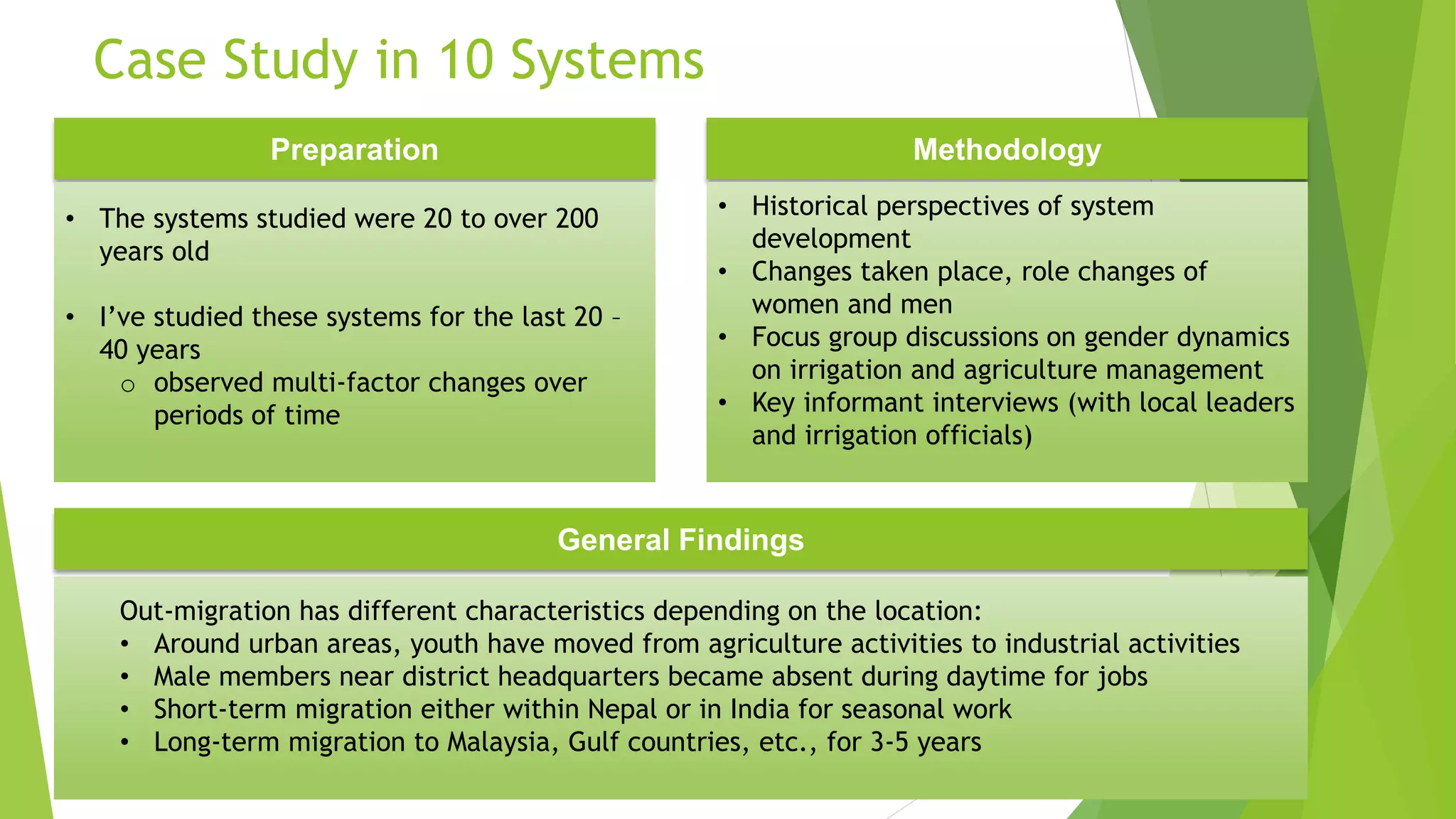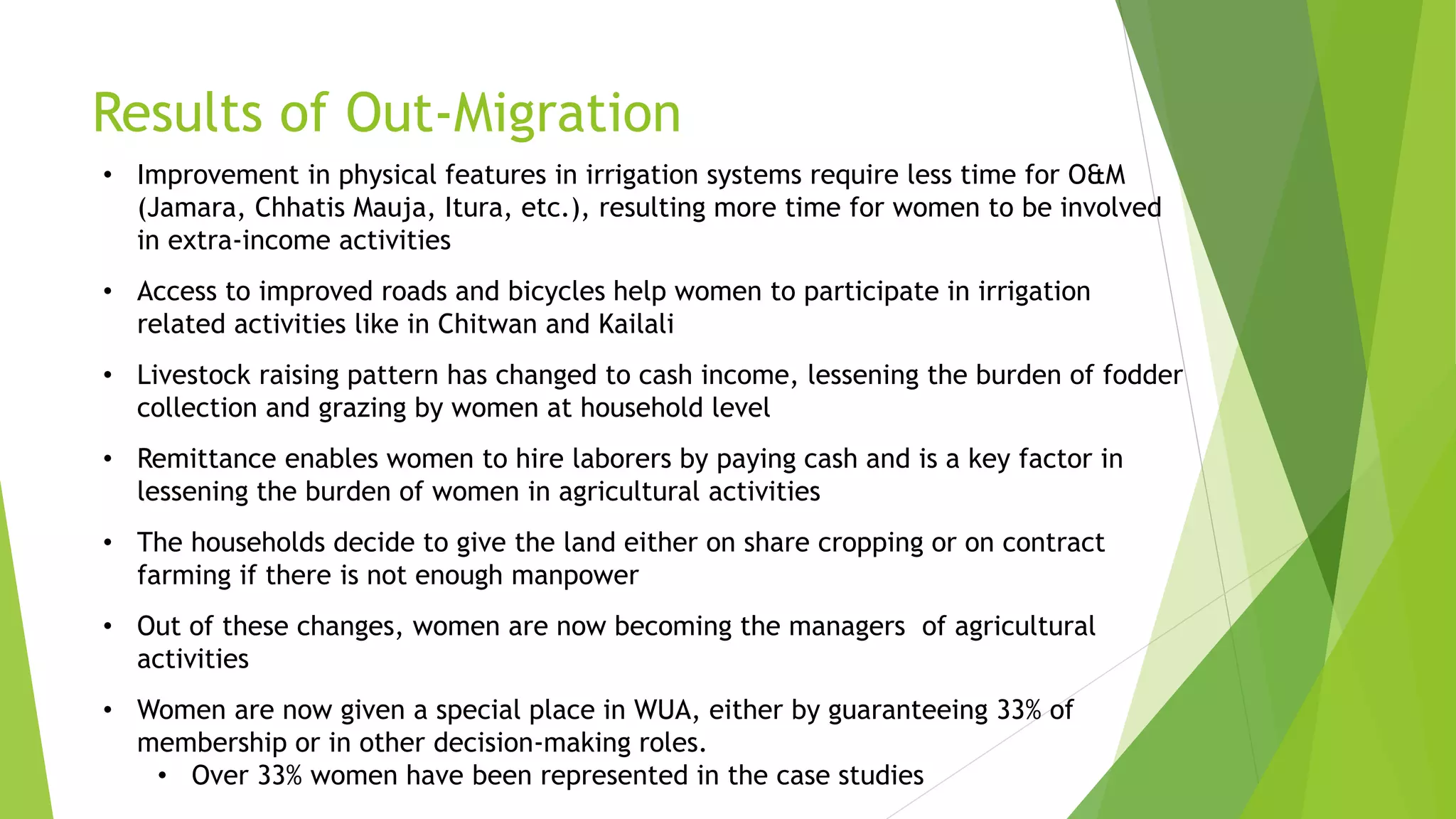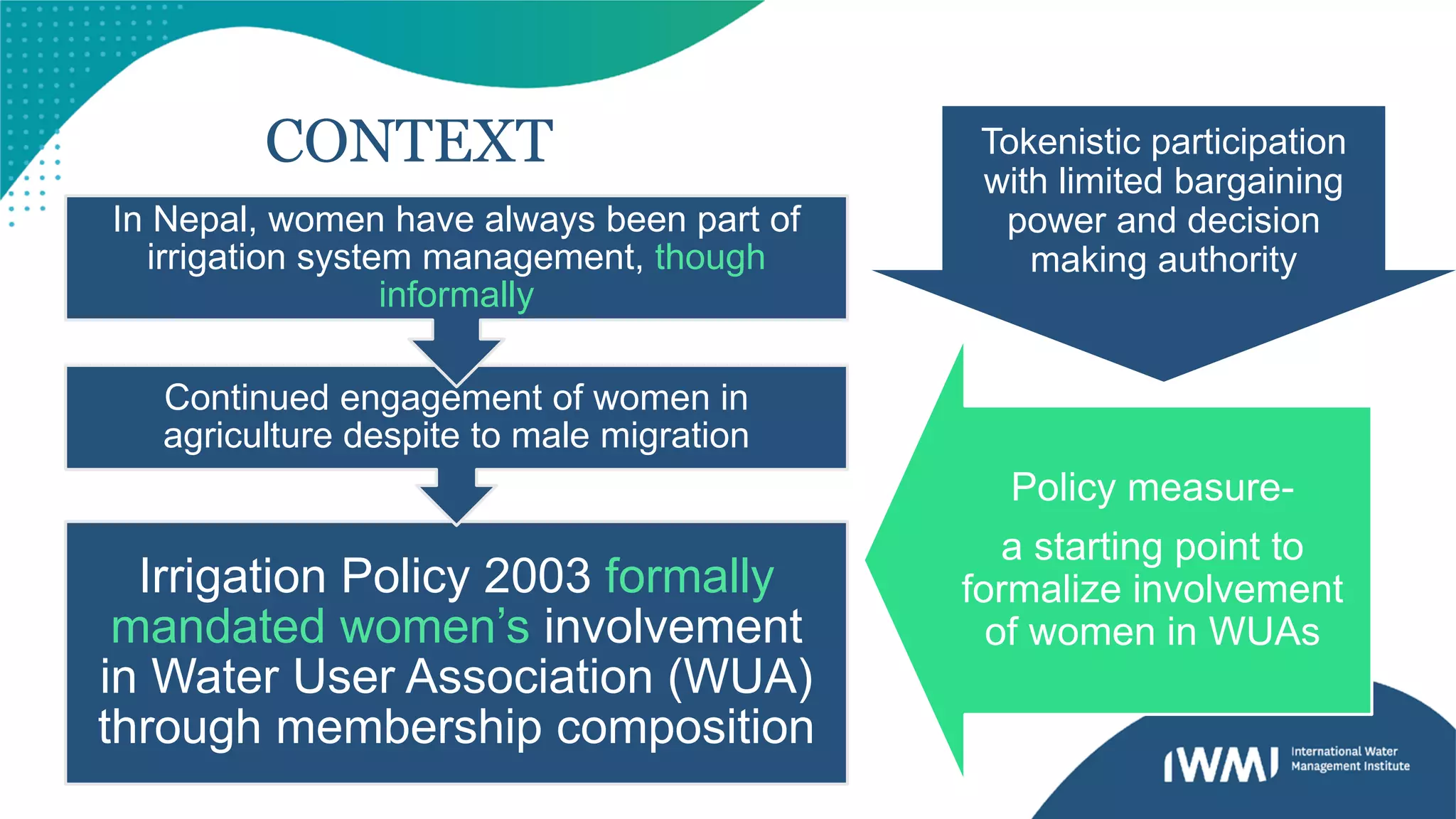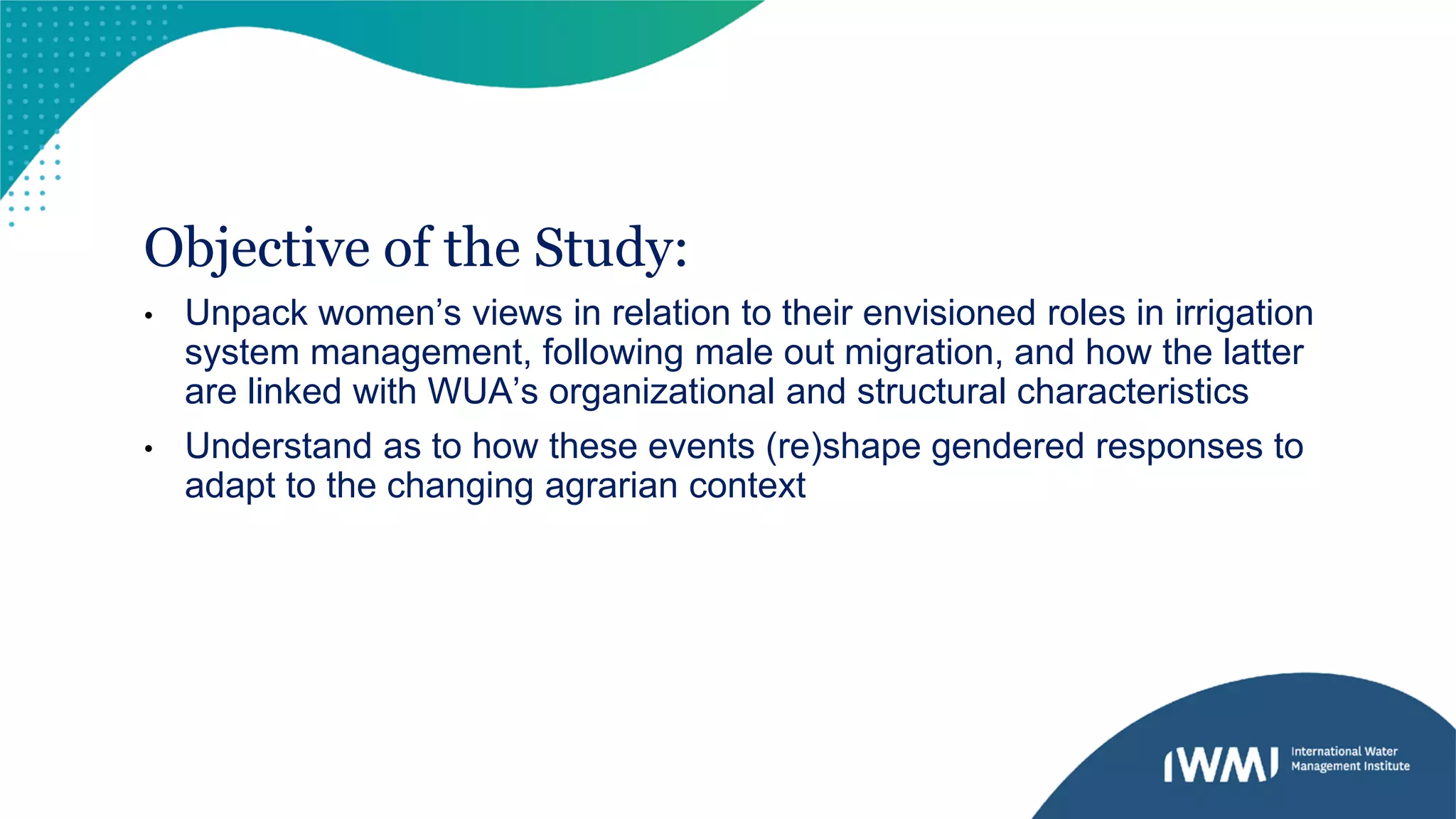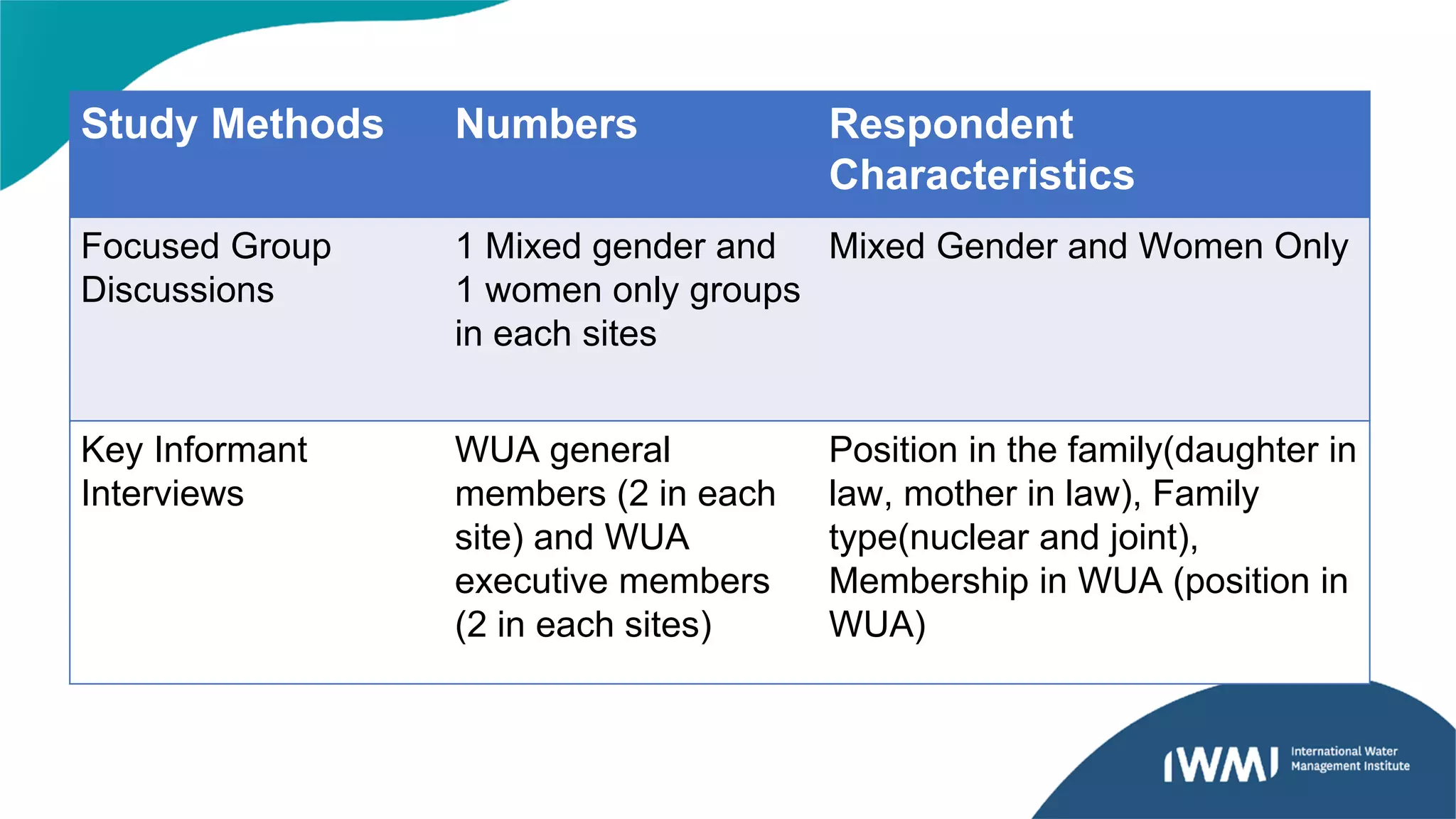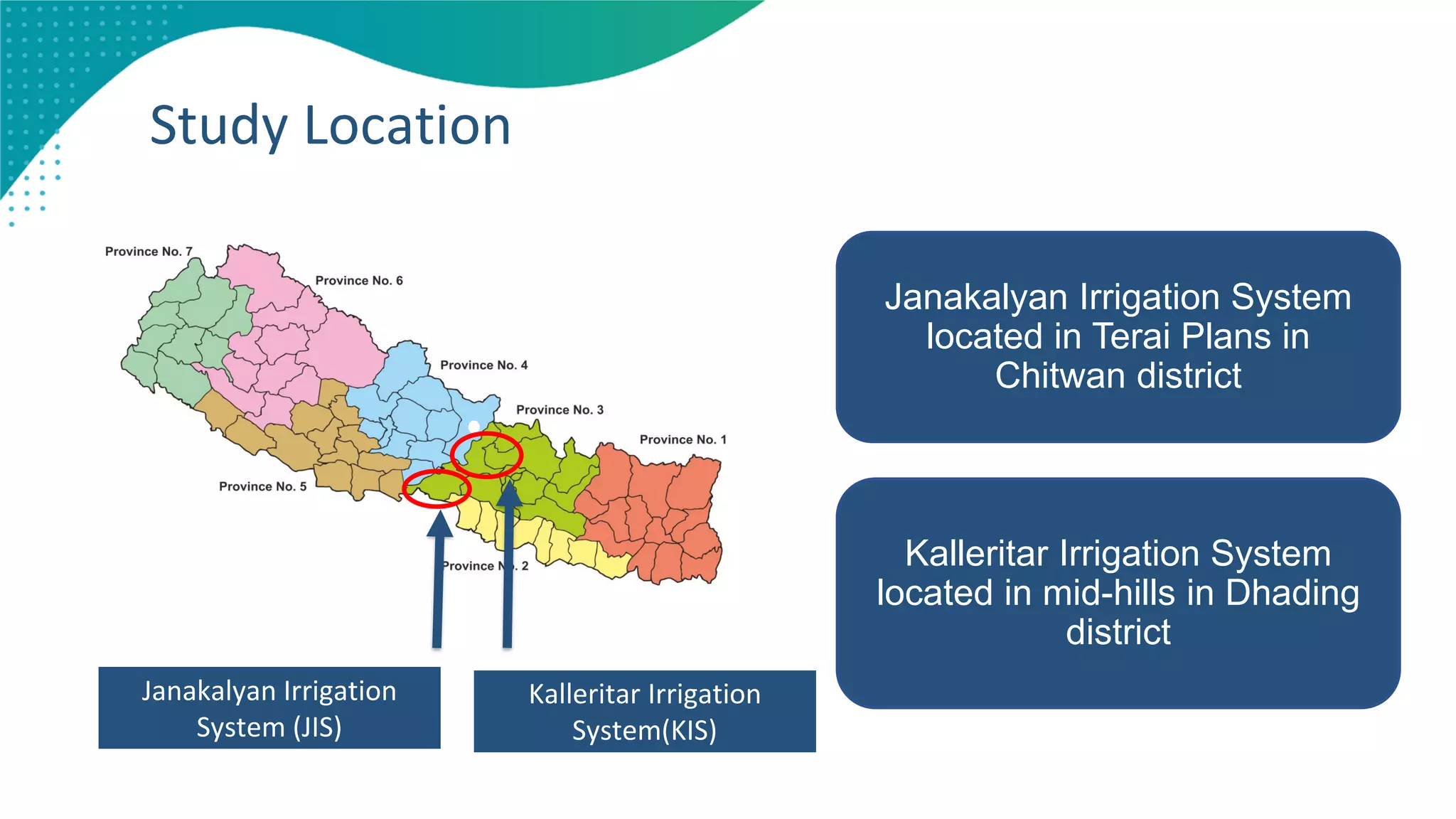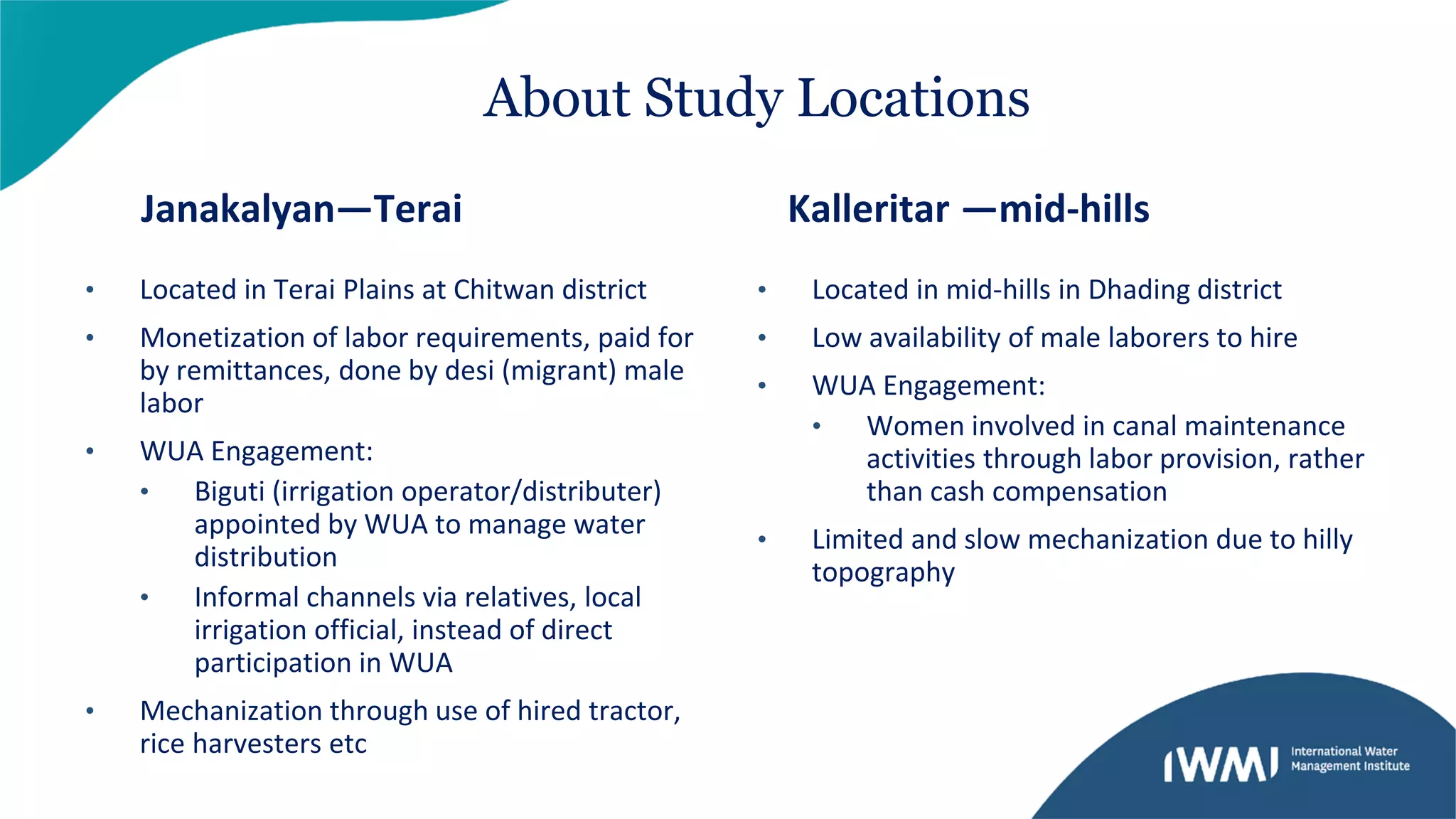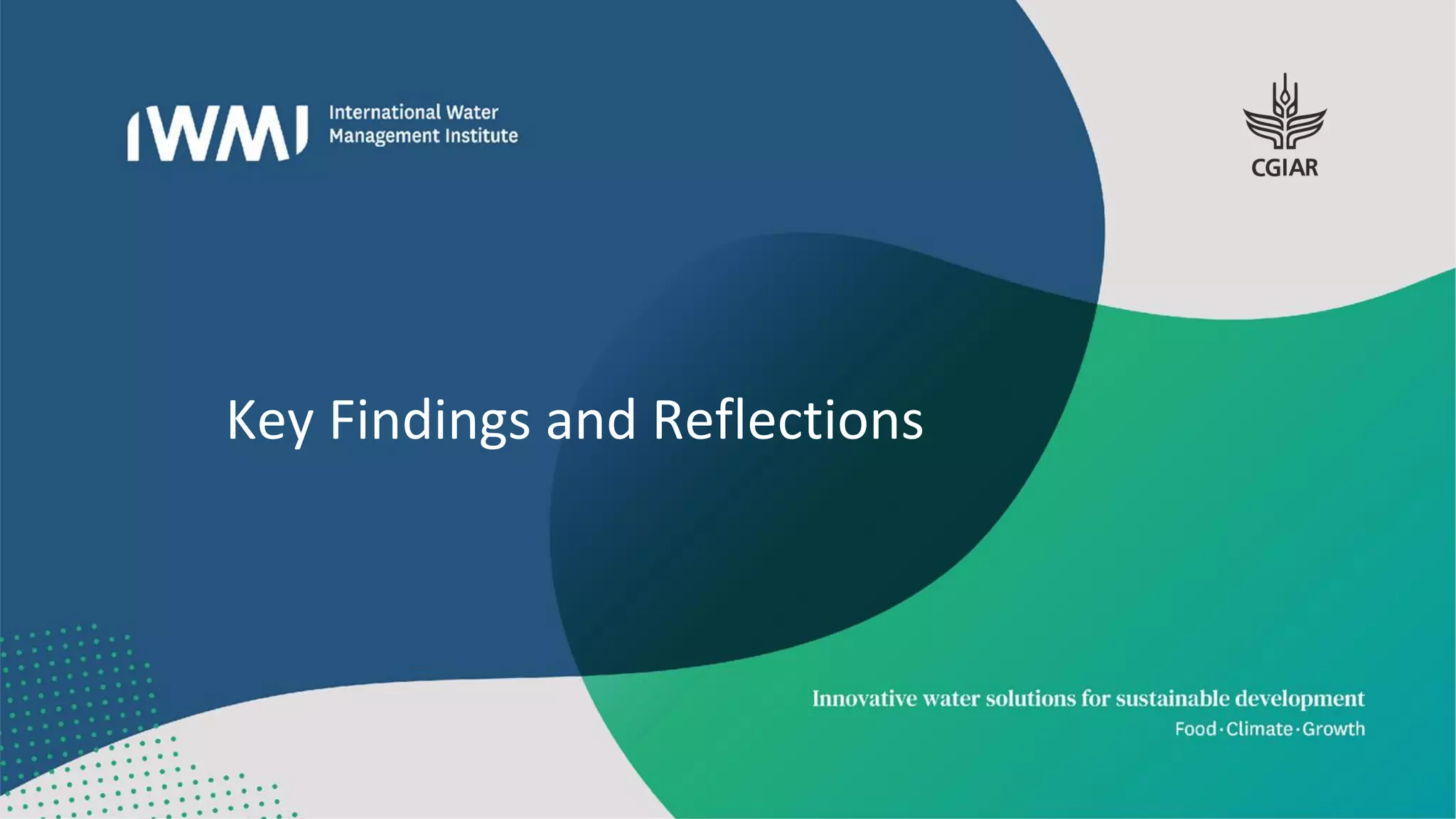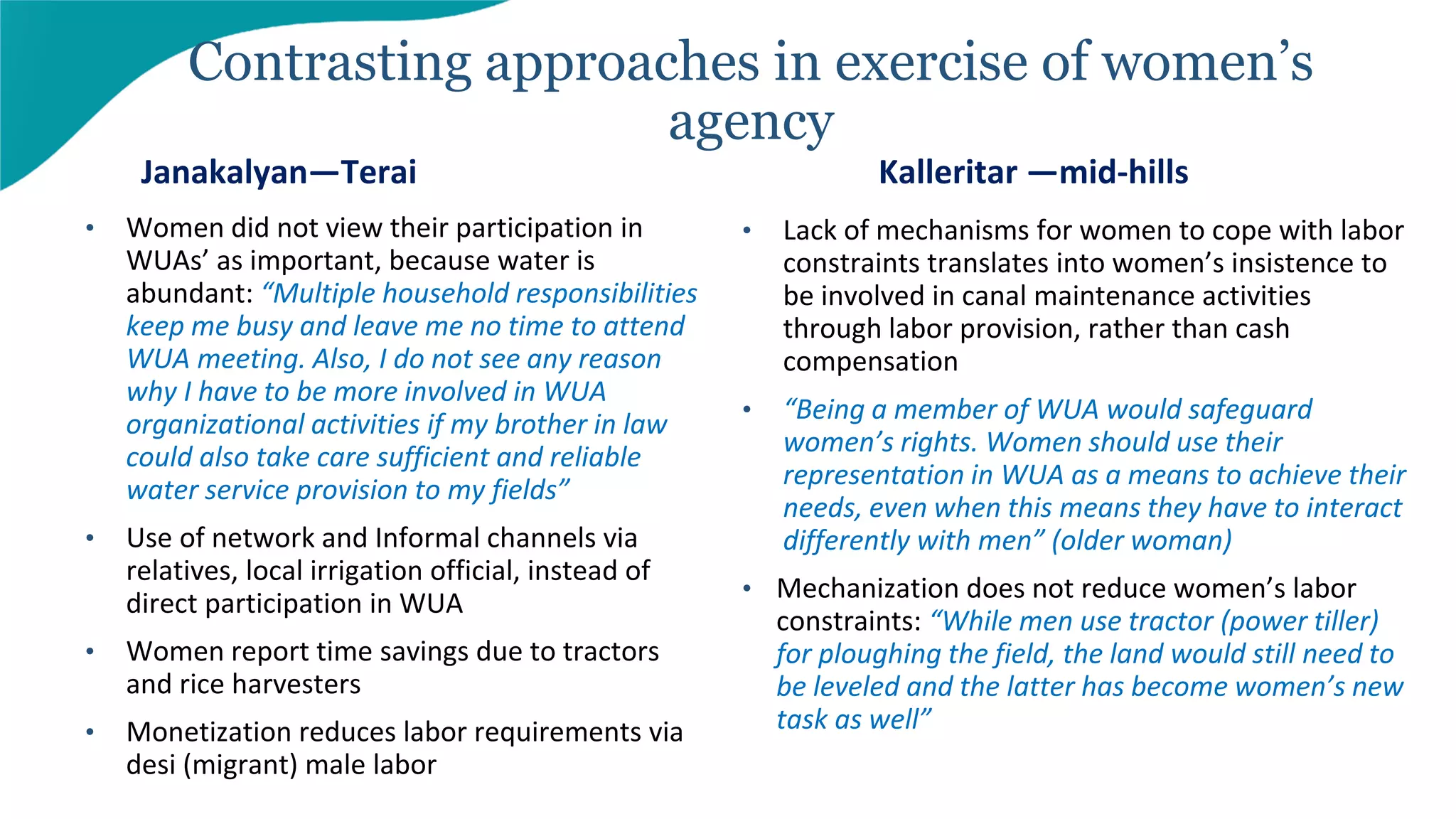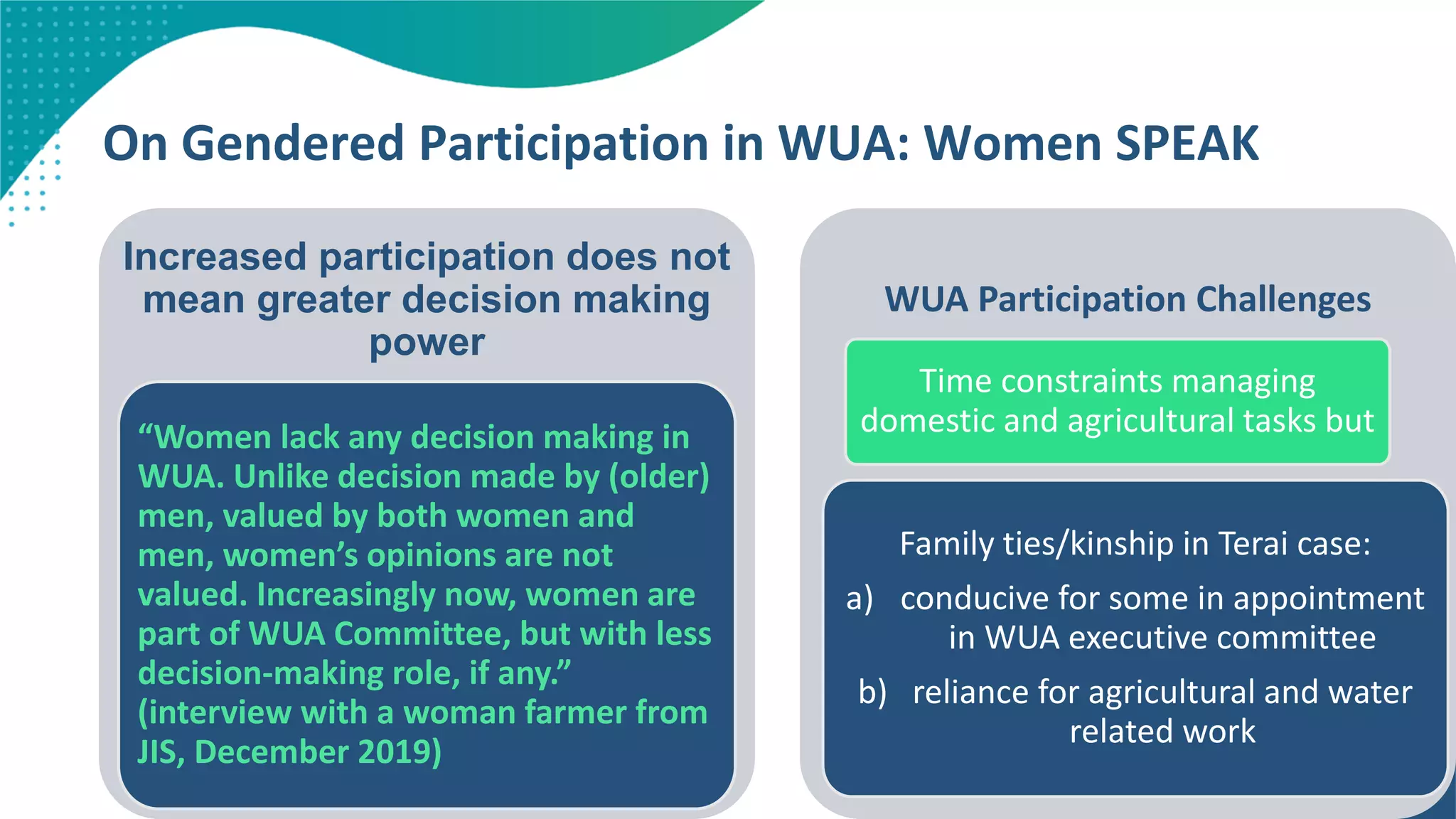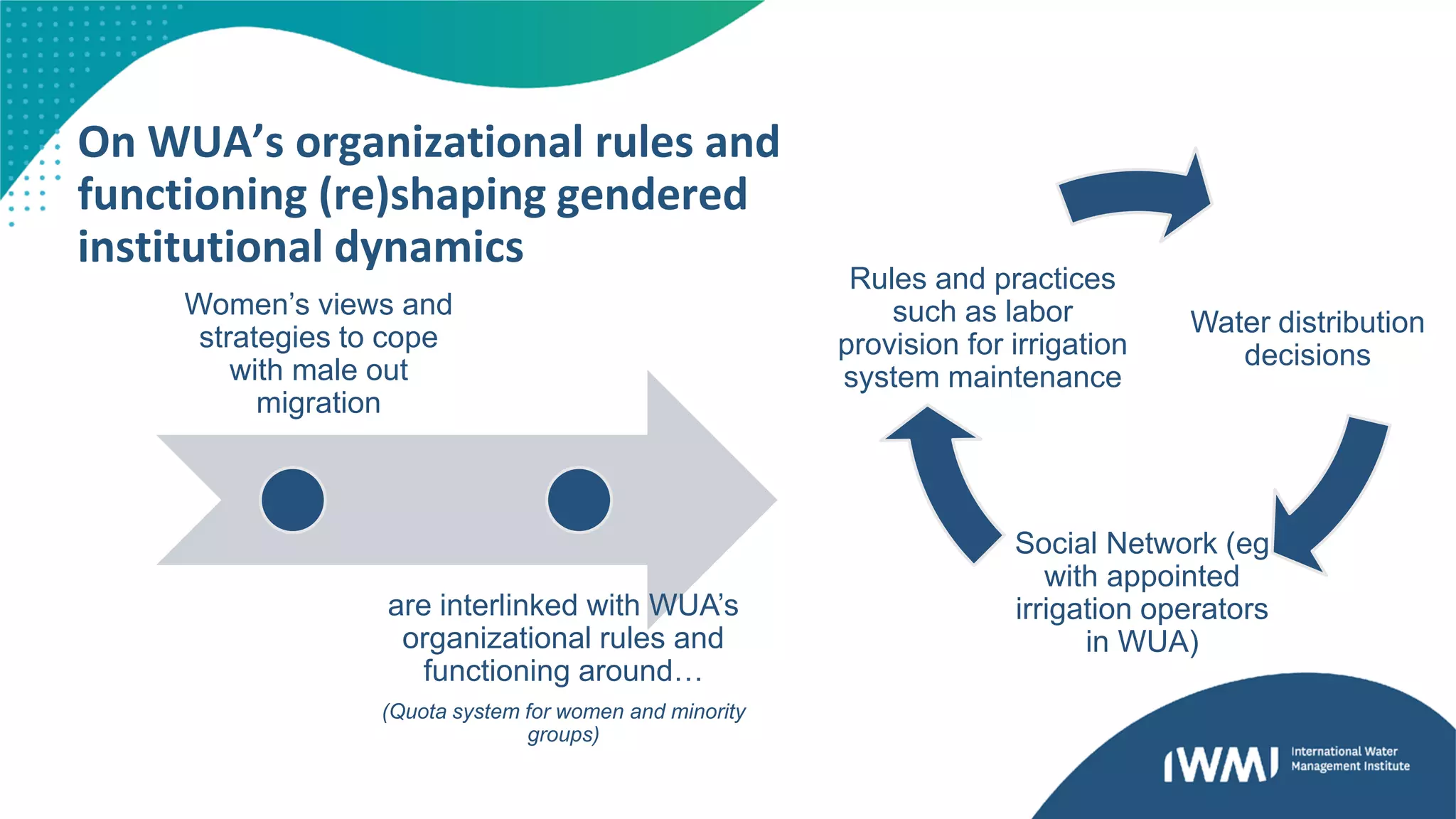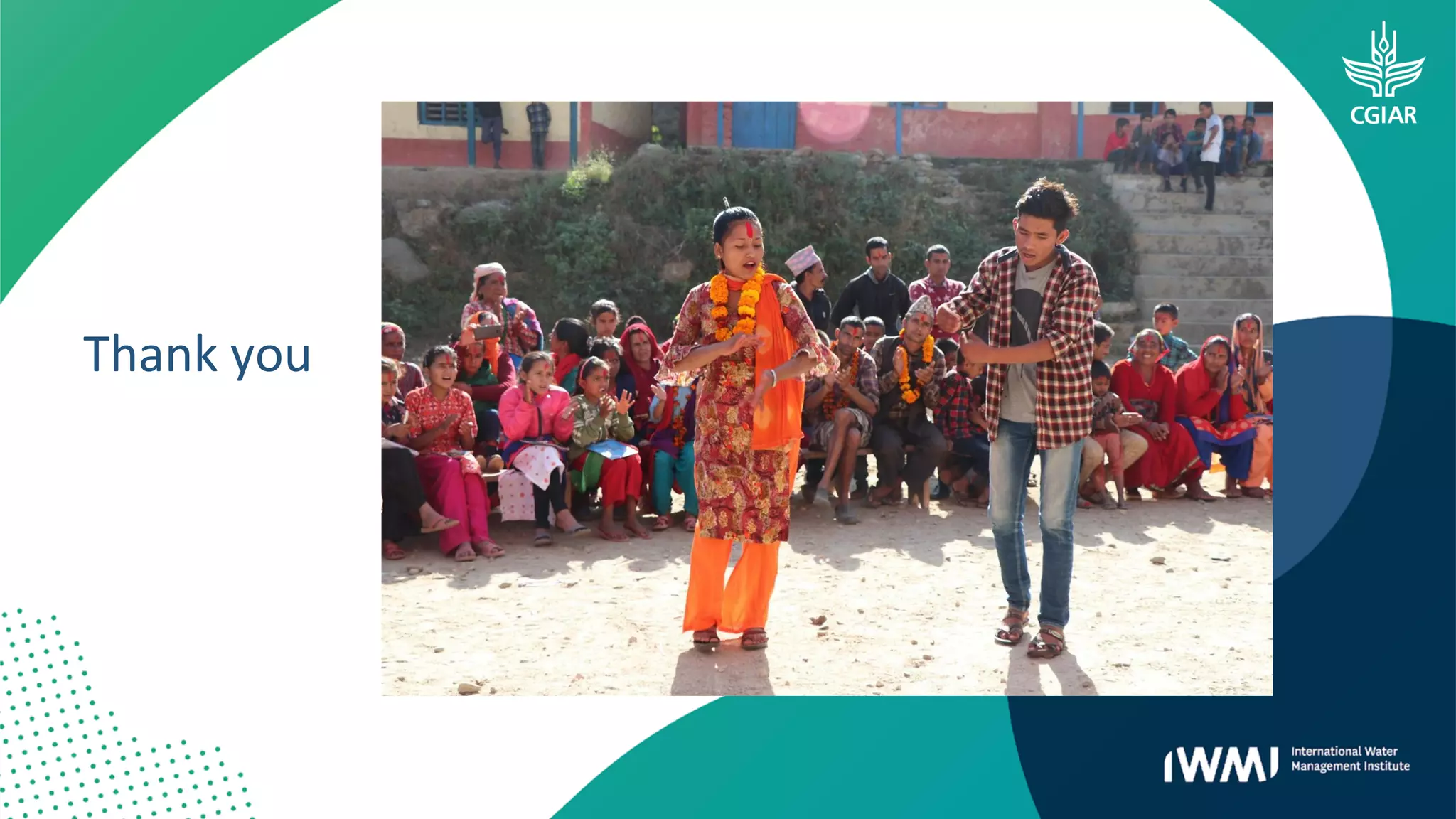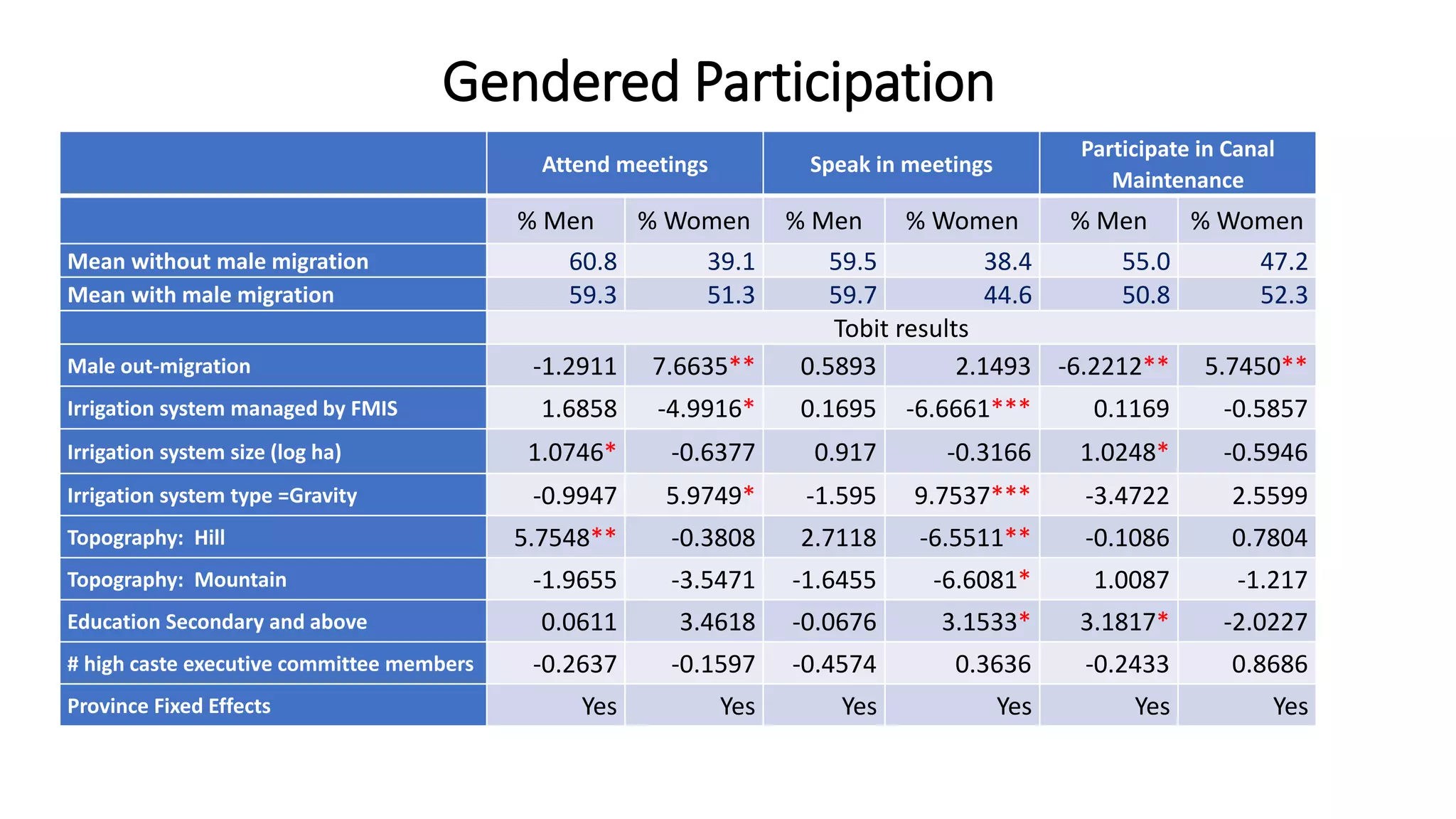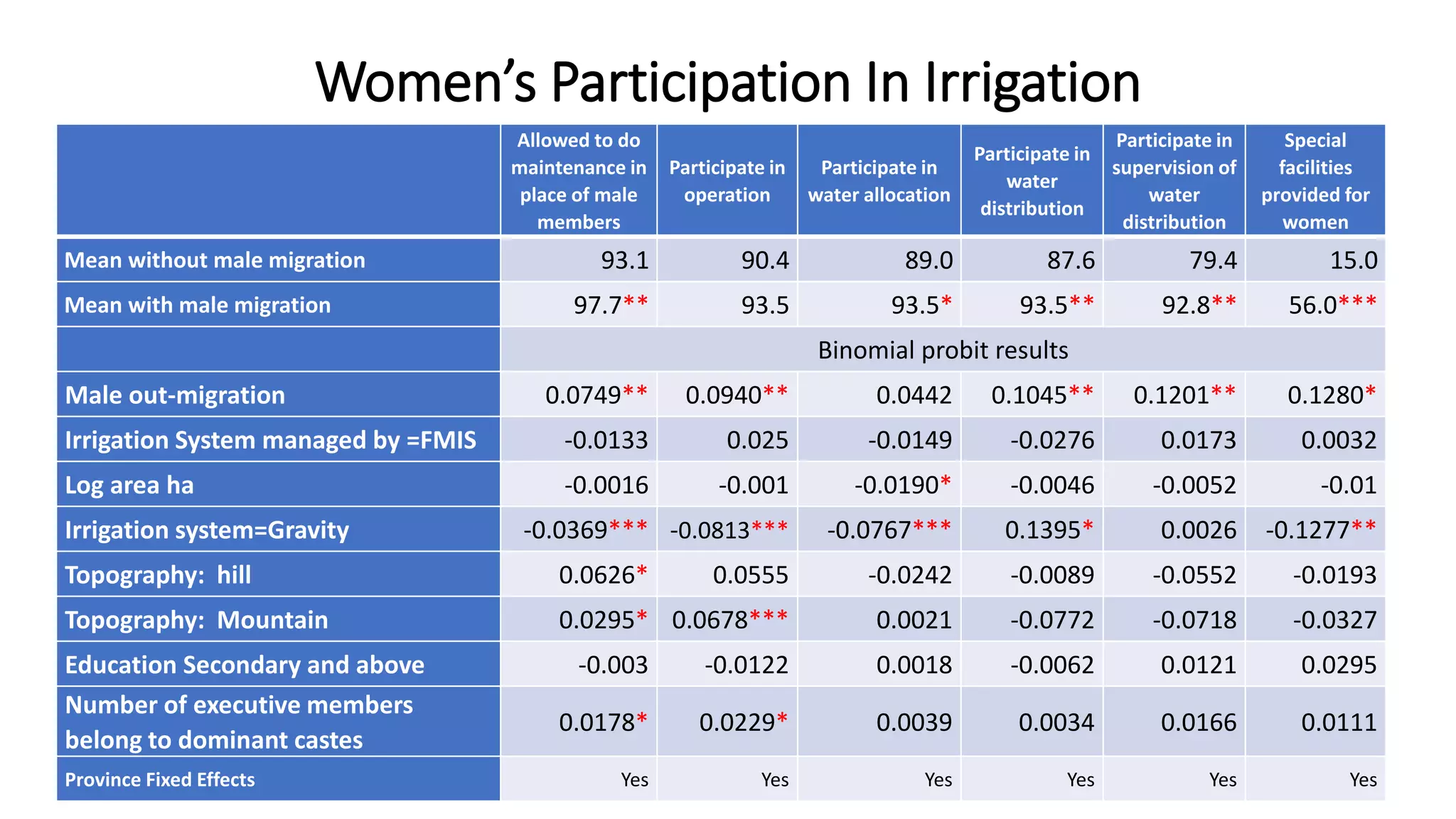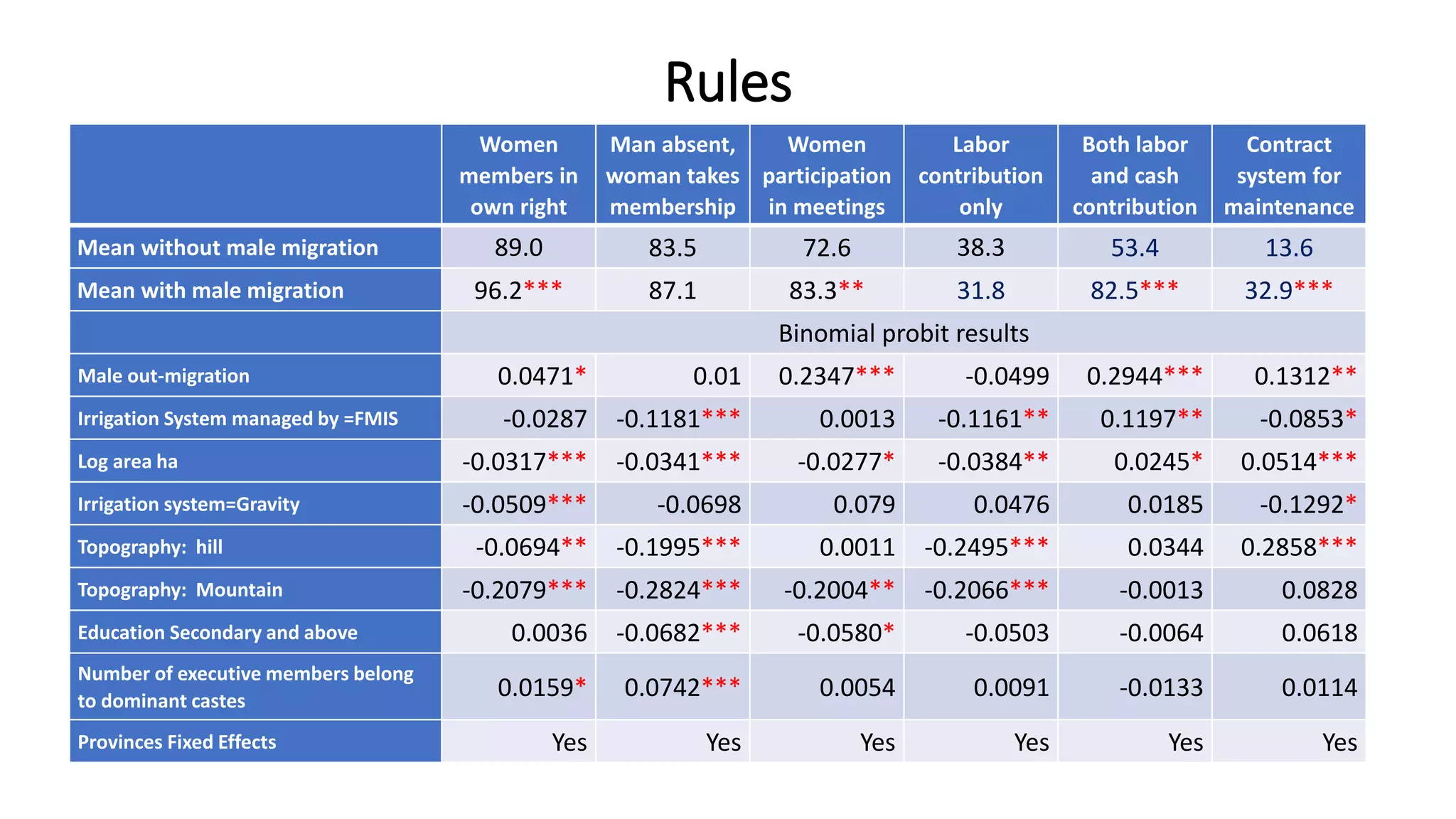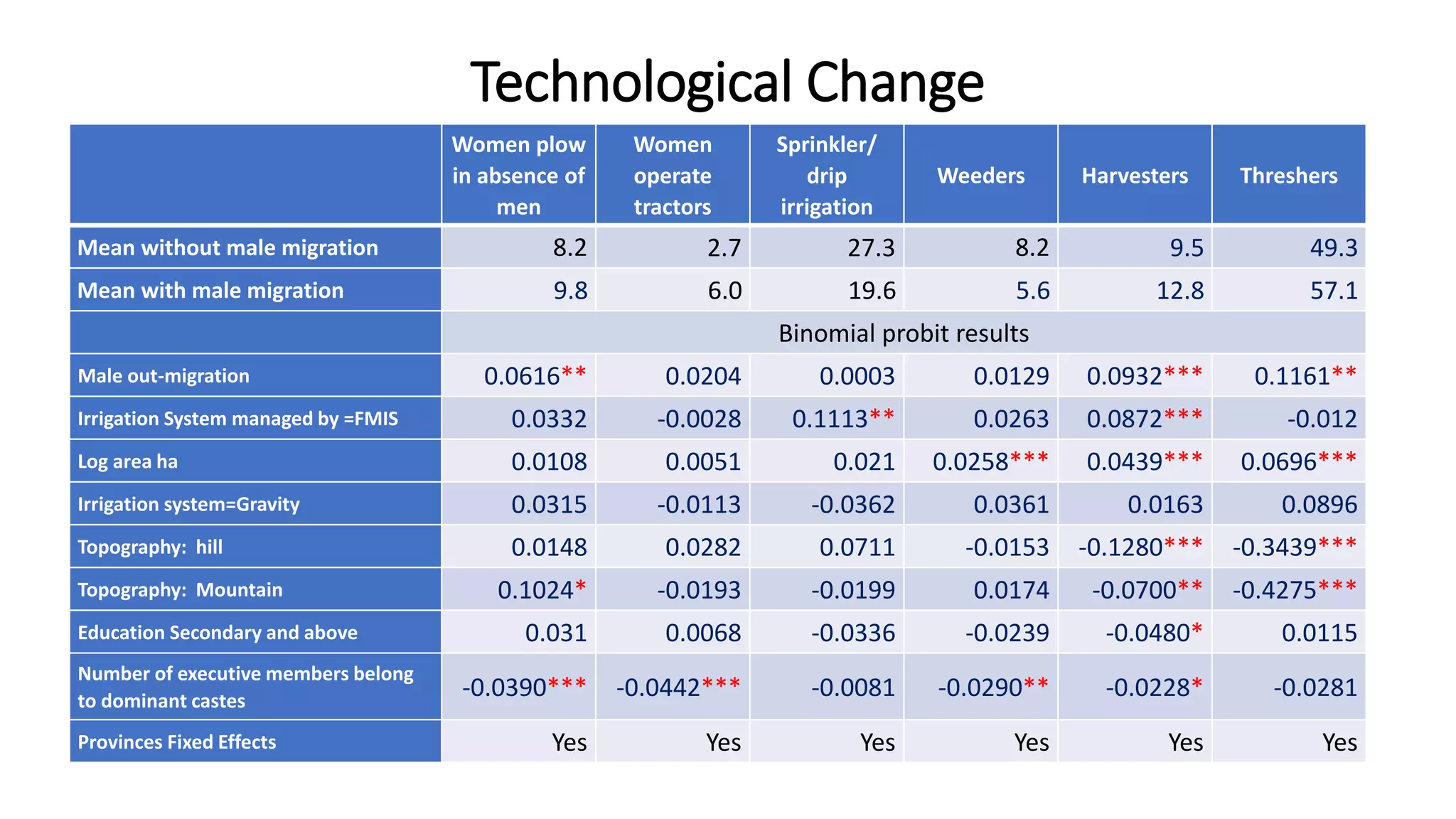The document explores the impacts of male migration on gender dynamics within irrigation governance in Nepal, highlighting how out-migration has led to increased responsibilities for women in agricultural and irrigation activities. It studies women's participation in Water User Associations (WUAs), noting changes in labor contributions, decision-making roles, and the necessity of technological advancements to cope with labor shortages. The findings suggest that while women's roles have expanded, challenges such as limited decision-making power and the persistence of traditional norms remain prevalent.
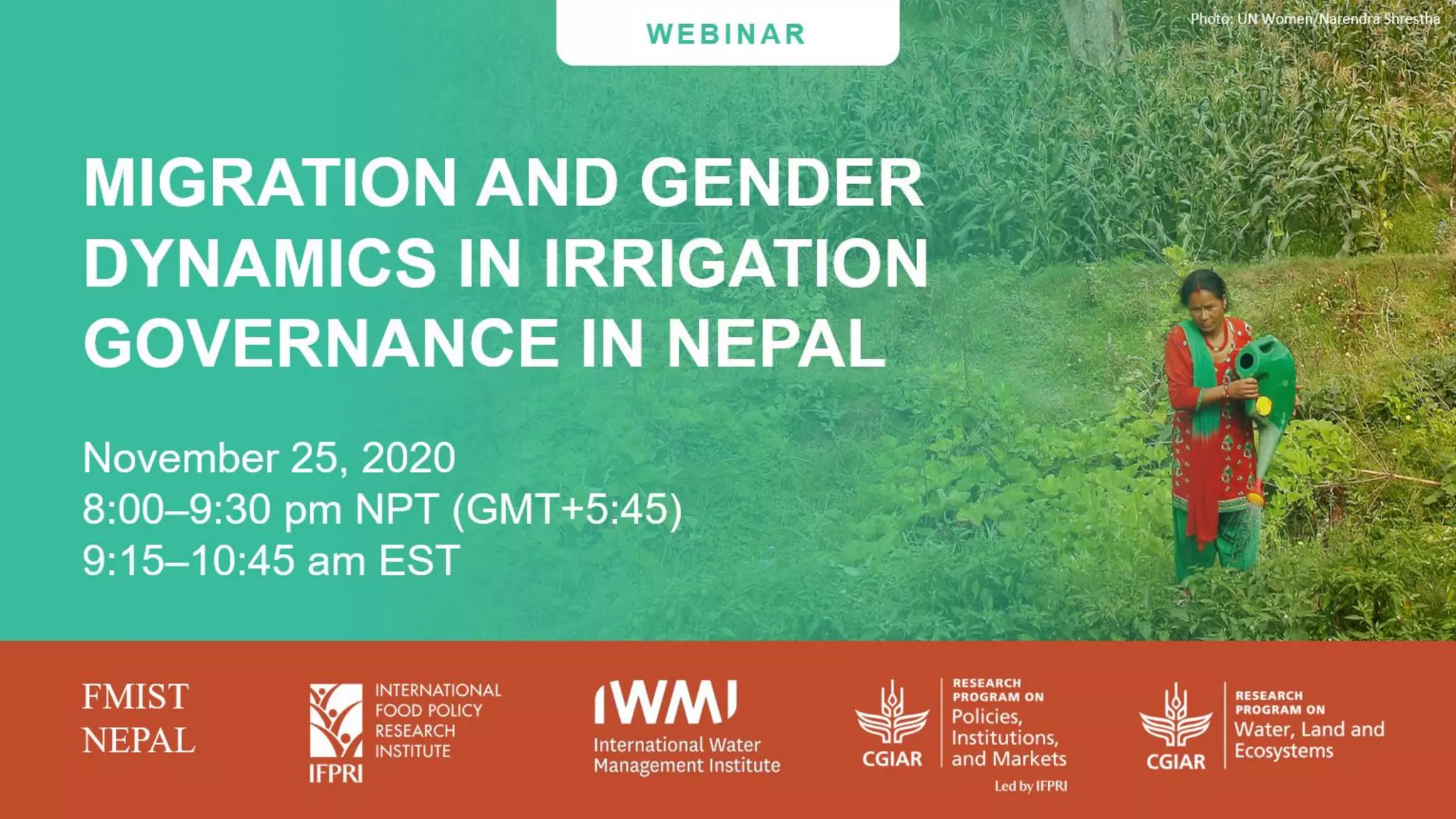
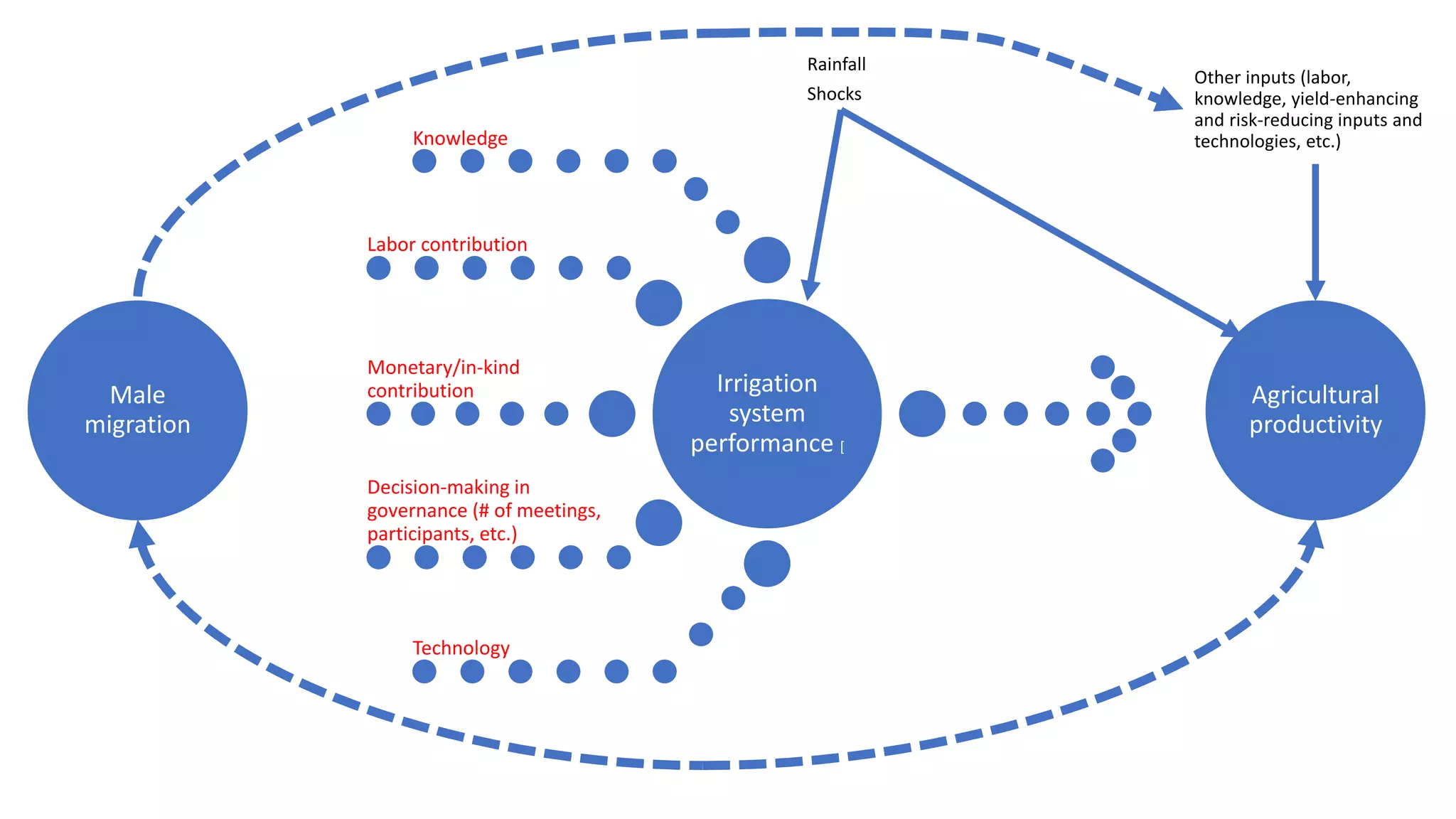
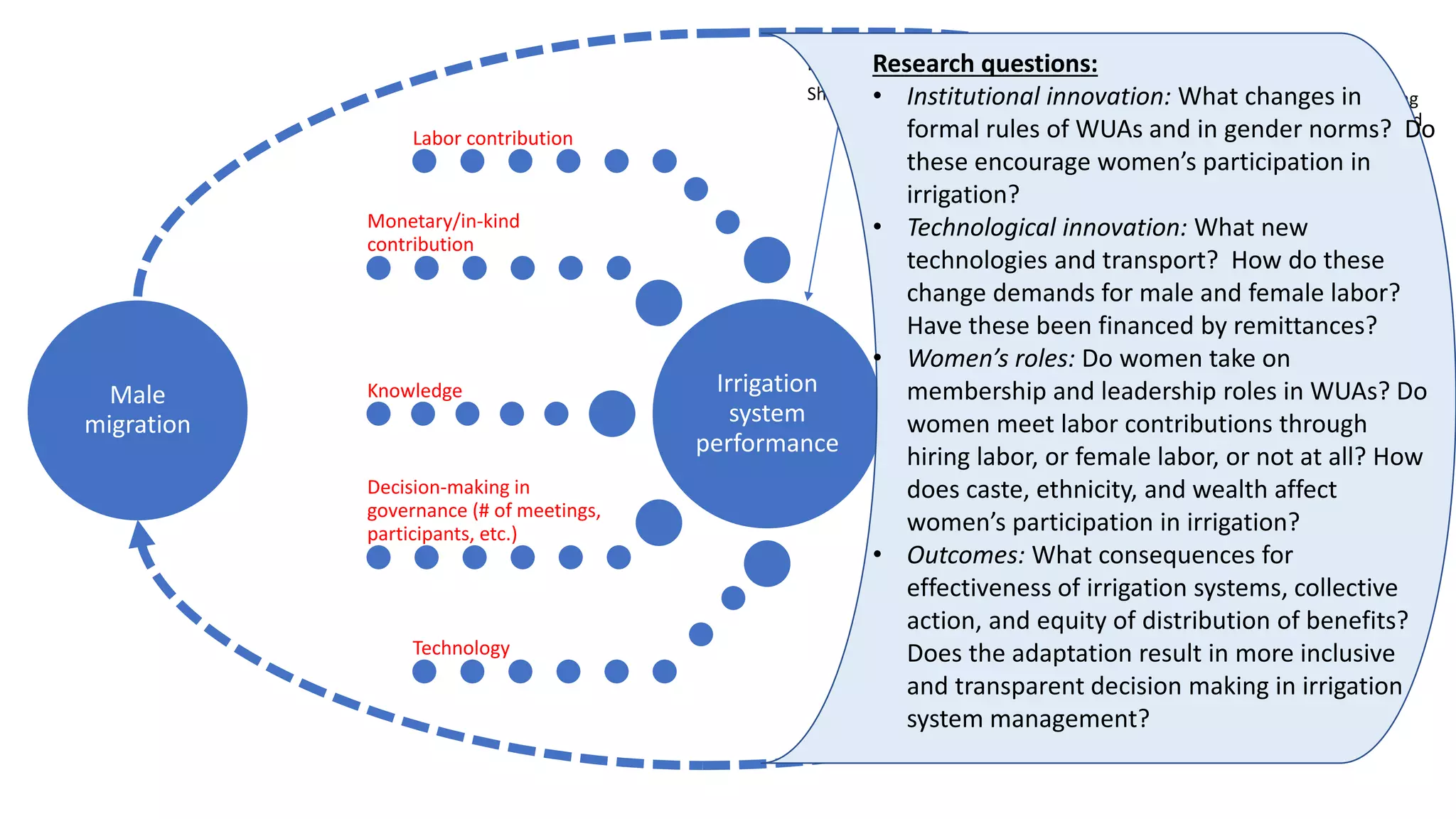
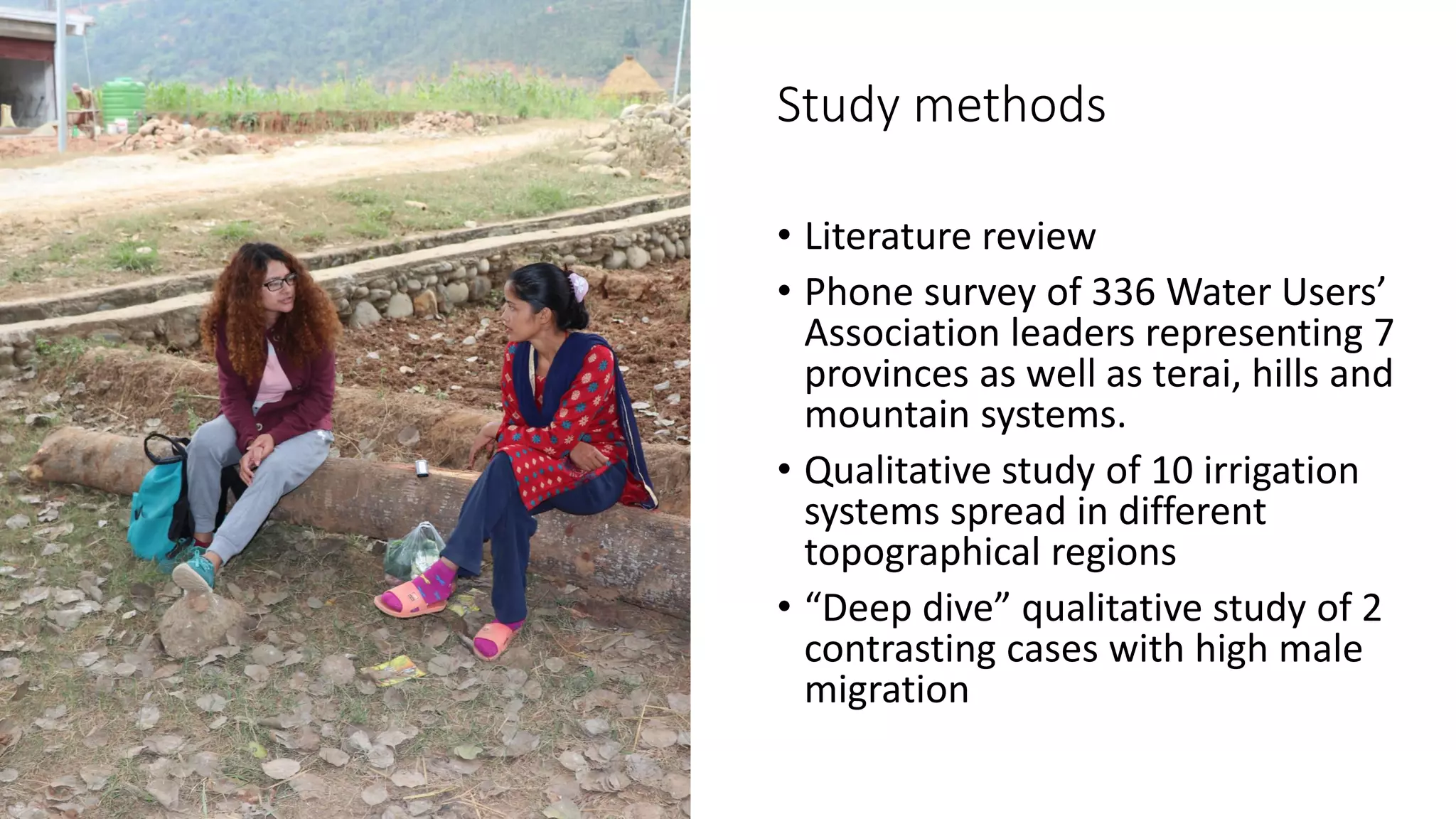
![Migration and
Gender Dynamics
in Irrigation
Governance in
Nepal: Results of
Phone Survey with
WUA Leaders
• Ruth Meinzen-Dick and Wei Zhang
(IFPRI)
• Prachanda Pradhan (Farmer Managed
Irrigation System Promotion Trust,
Nepal [FMIST])
Photo credits: Bob Yoder, Manita Raut](https://image.slidesharecdn.com/november25webinarallpresentations-201126210707/75/Migration-and-gender-dynamics-in-irrigation-governance-in-Nepal-5-2048.jpg)
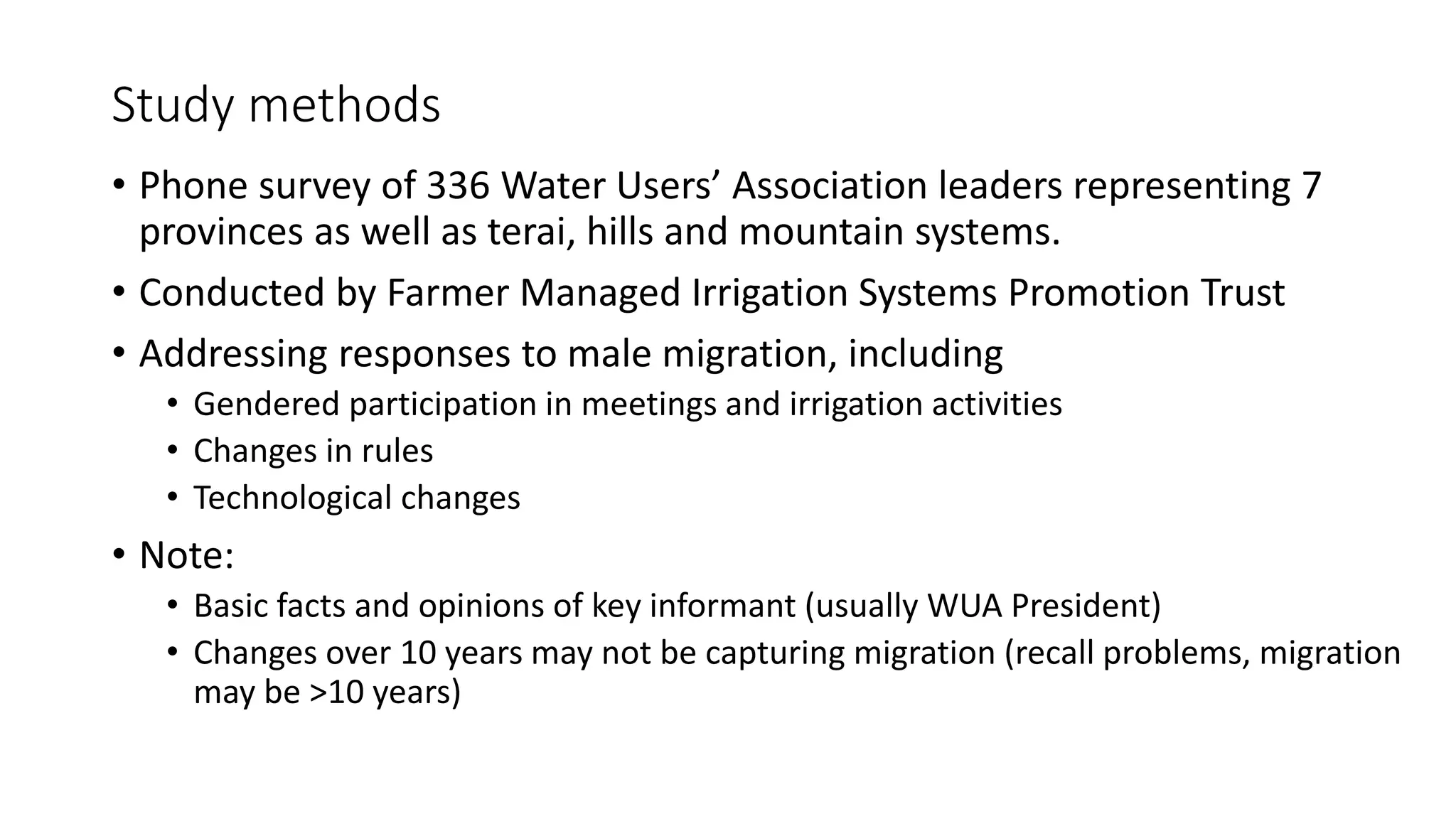
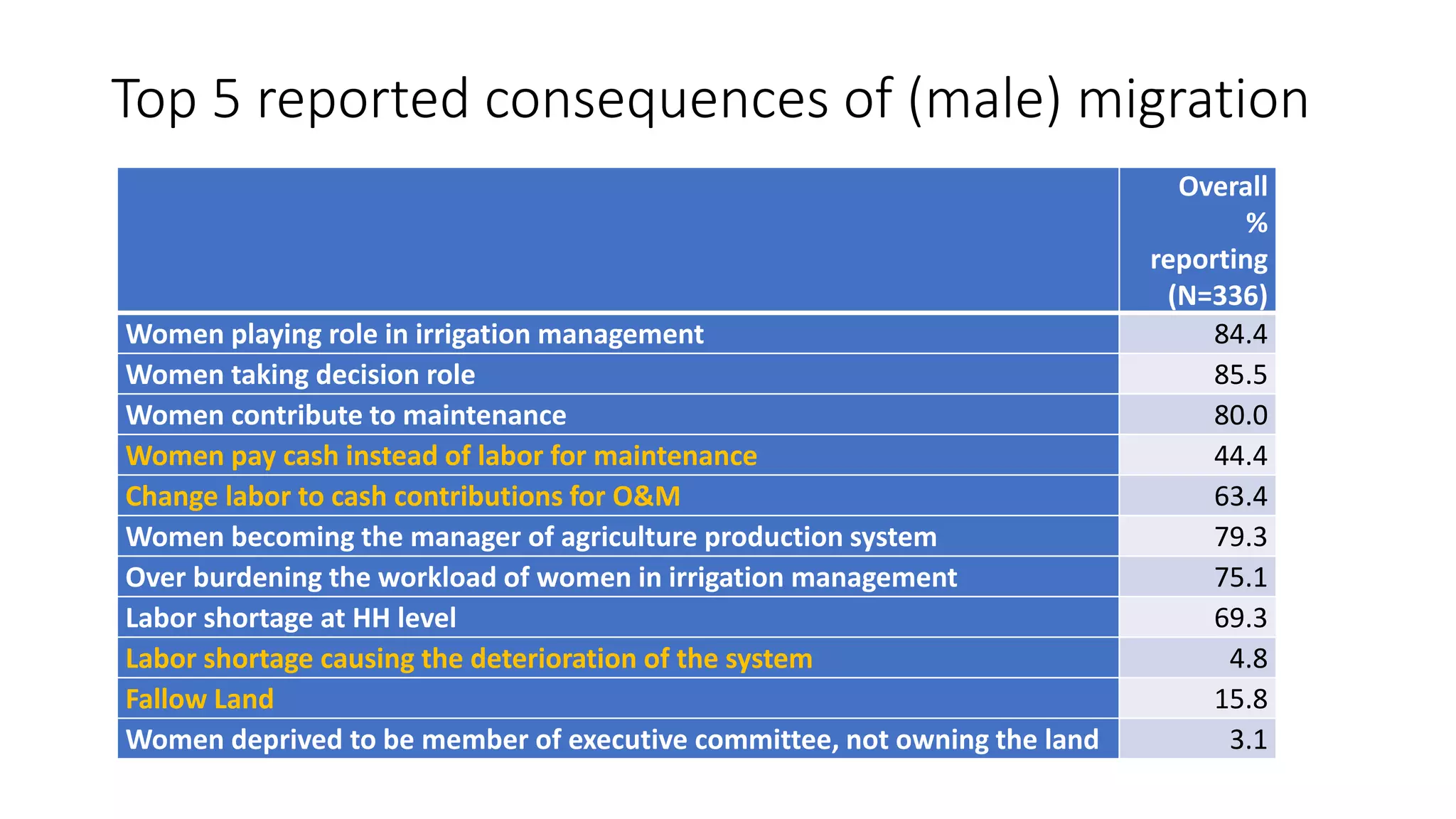
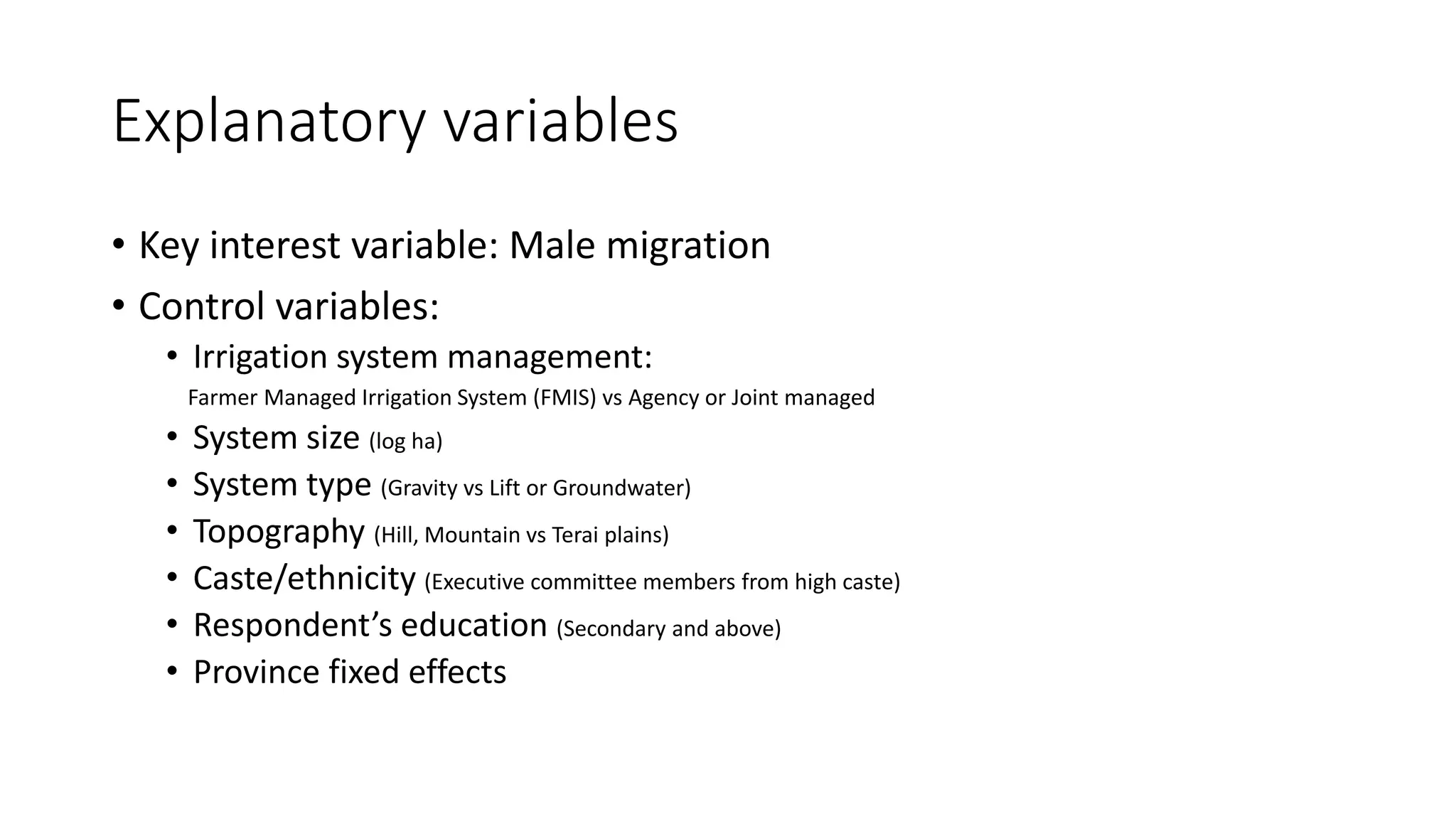
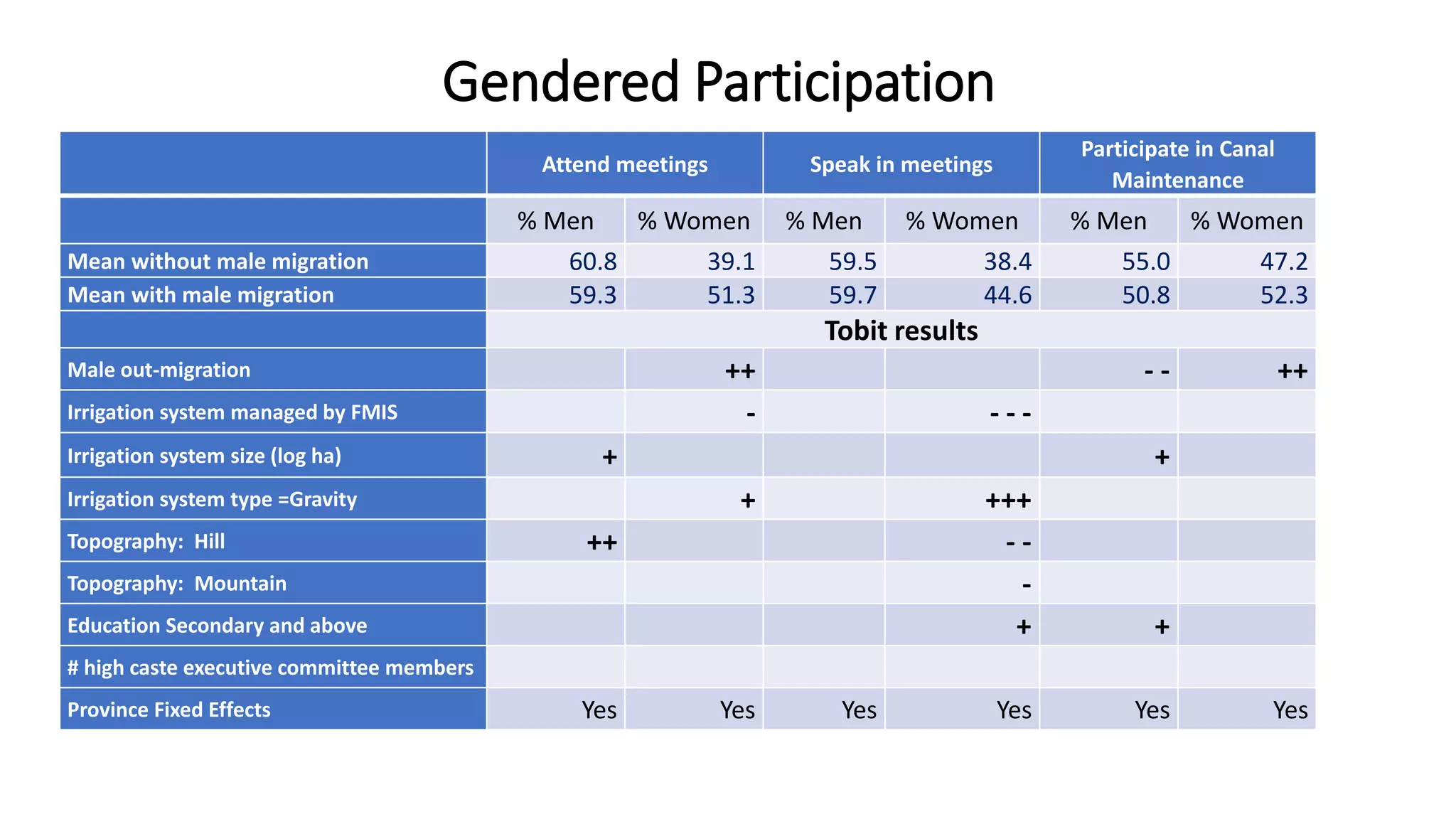

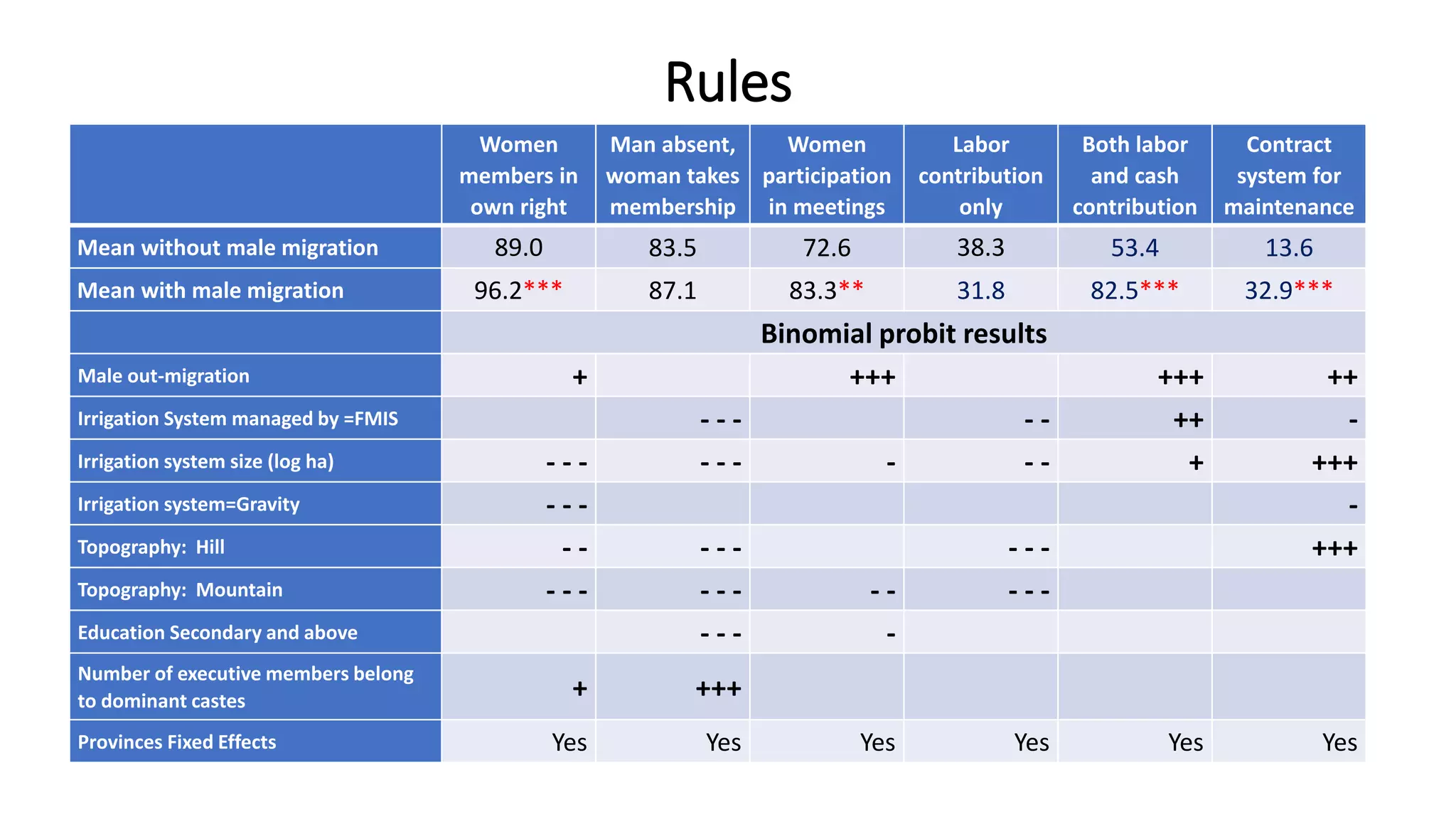
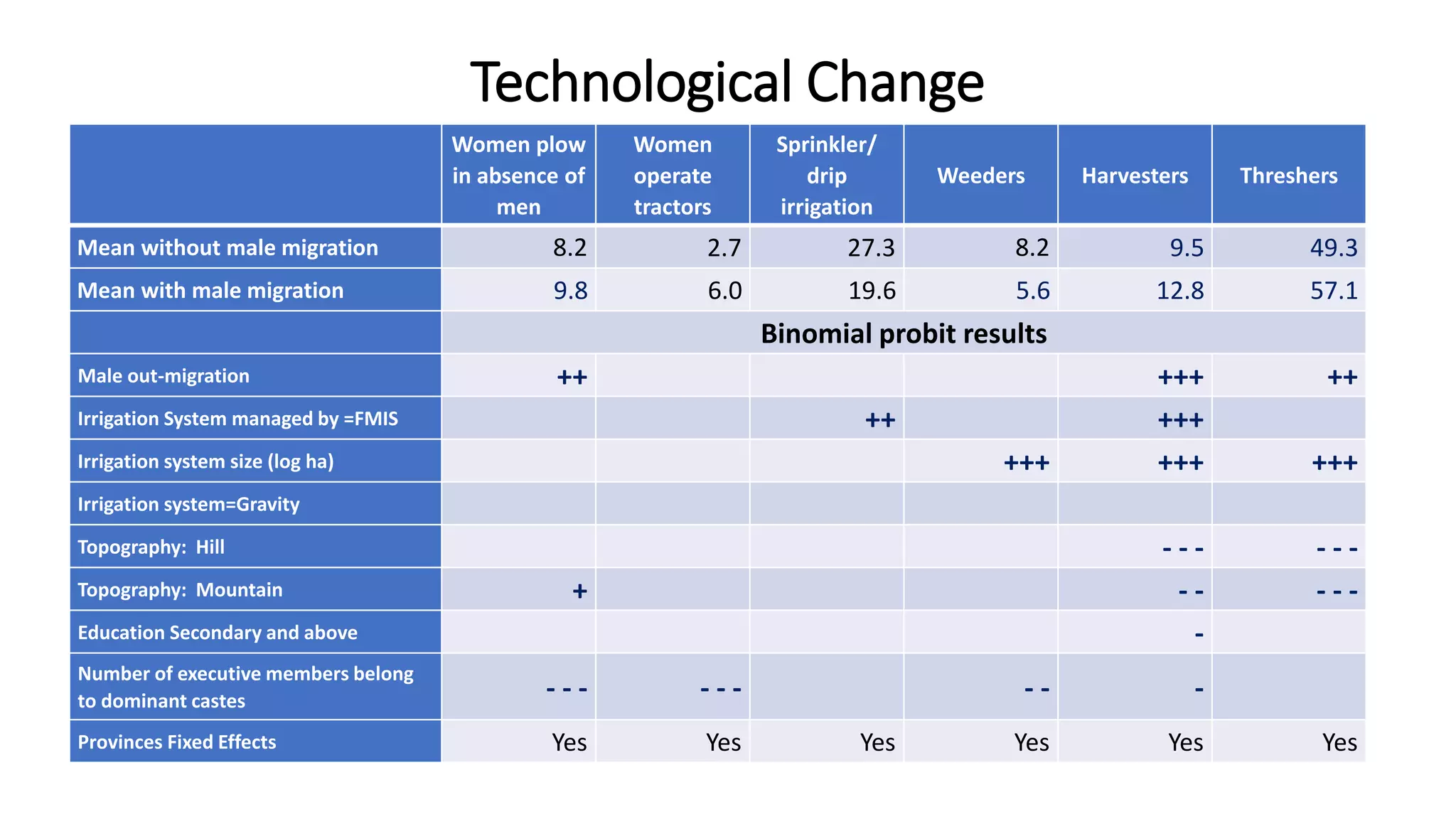
![“Impacts of migration
on gender dynamics in
irrigation governance in
Nepal - Findings from
case study of 10
irrigation systems”
Prachanda Pradhan (Farmer
Managed Irrigation System
Promotion Trust, Nepal [FMIST])
Photo credits: Bob Yoder, Manita Raut](https://image.slidesharecdn.com/november25webinarallpresentations-201126210707/75/Migration-and-gender-dynamics-in-irrigation-governance-in-Nepal-13-2048.jpg)
